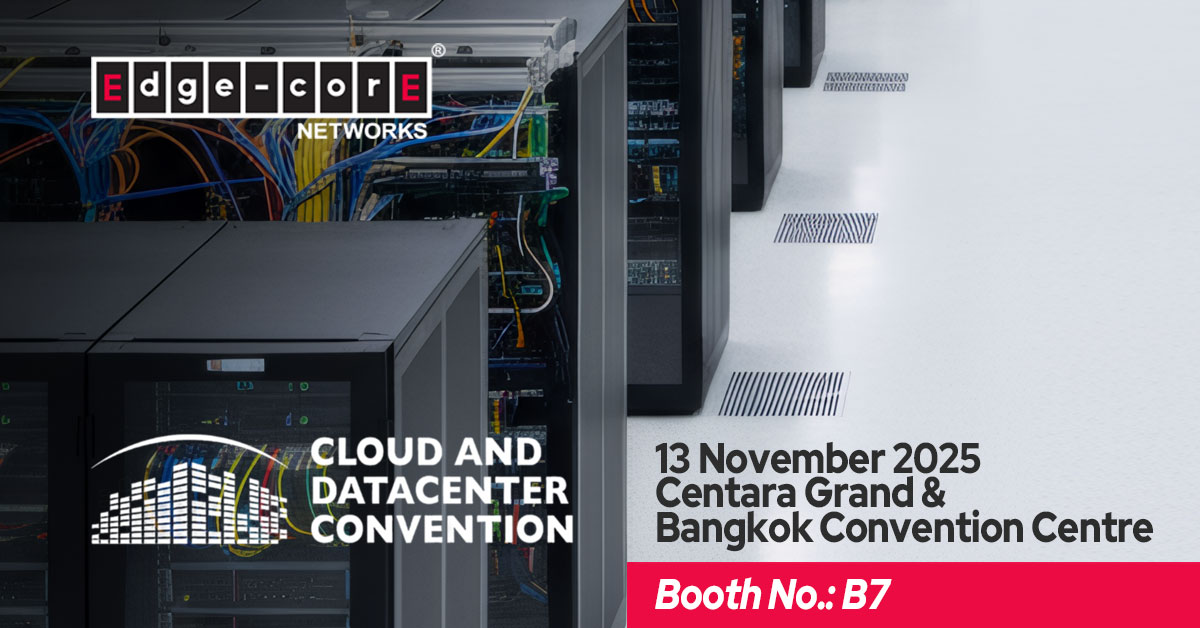
Центры обработки данных вступают в новую эру. Взрывной спрос на искусственный интеллект (ИИ) и машинное обучение (МО) фундаментально изменил принципы работы сетей. Рабочие нагрузки ИИ невероятно требовательны, генерируя огромные объёмы чувствительного ко времени и “пачечного” трафика, с которым традиционные сетевые подходы не справляются эффективно. И в эпоху ИИ эта неэффективность сети напрямую выливается в реальные затраты, поскольку даже самые незначительные задержки в сети могут привести к простою драгоценных графических процессоров стоимостью в миллионы долларов. Сеть больше не может быть пассивным каналом; она должна быть интеллектуальной, адаптивной и… быстрой, с минимальными задержками и ошибками или без них!
Встречайте новую серию коммутаторов Broadcom Tomahawk 6. Мы слышим о ней уже больше года, и она всё ещё не запущена в серийное производство, но мы уже несколько месяцев демонстрируем наши решения на основе почти финальной версии. Могу сказать одно: потрясающе! Дело не только в более высоких скоростях (хотя она невероятно быстрая, достигая пропускной способности 102,4 Тбит/с); и не только в её высокорадиокулярных возможностях (хотя она может похвастаться шокирующим количеством 1024 100G SerDes на одном чипе); дело в революционной новой функции, разработанной специально для эпохи искусственного интеллекта, которую Broadcom называет… Когнитивная маршрутизация 2.0. Многие из нас упоминали это в неформальных разговорах, но я хотел бы немного подробнее рассказать о том, что на самом деле представляет собой CRv2. (Это подробное понимание поможет нам всем оценить революционный статус Tomahawk 6).
Итак, выпейте кофе и давайте углубимся в то, что делает Cognitive Routing 2.0 (CRv2) революционным решением.
Что такое когнитивная маршрутизация?
По сути, “когнитивная маршрутизация” — это модный термин для обозначения новой, очень интеллектуальной и адаптивной системы управления трафиком от Broadcom. Представьте себе её как умный GPS-навигатор для каждого пакета данных.
В традиционных сетях (включая чипы предыдущего поколения, такие как Tomahawk 5) маршрутизация в основном статична или основана на более простых алгоритмах. Пакет данных обычно следует по заранее заданному или простому пути в сети. Это хорошо работает для предсказуемого, повседневного трафика (например, просмотра веб-страниц или электронной почты), но перестаёт работать, когда тысячи графических процессоров пытаются взаимодействовать друг с другом. в тот же самый момент.
Эти модели “коллективного общения” ИИ создают огромные внезапные пробки на дорогах, известные как congestion. В традиционной сети трафик упирается в узкое место и просто накапливается, что приводит к задержкам (задержкам), потере пакетов, повторным передачам и, в конечном итоге, к значительному замедлению обучения ИИ с прямым негативным влиянием на общие затраты и использование графических процессоров.
Технология Cognitive Routing 2.0 в Tomahawk 6 фундаментально меняет эту парадигму. Она позволяет сети “думать” и динамически реагировать на условия в реальном времени. И снова, это не просто шаг вперёд по сравнению с предыдущими чипсетами, а полная переработка для более интеллектуальной передачи пакетов.
Tomahawk 6 против Tomahawk 5: Эволюция интеллекта
Не поймите меня неправильно, Tomahawk 5 по-прежнему остаётся мощным устройством, предлагая лидирующую пропускную способность 51,2 Тбит/с. Он справляется с перегрузками, используя проверенные временем механизмы, но его маршрутизация более традиционна. После выхода на рынок он продемонстрировал впечатляющую производительность, но ему не хватало глубины, проактивный интеллект, необходимый для управления трафиком с использованием ИИ.
Коммутатор 1ТП7Т 6 продвигает эту потребность в ‘созданном с нуля’ интеллекте с Когнитивная маршрутизация 2.0, который вносит несколько важных улучшений:
- Динамическая балансировка нагрузки: Система Tomahawk 6 активно отслеживает движение транспорта. Когда на пути становится слишком много машин, система переключения автоматически перенаправляет новый транспорт на менее загруженные маршруты. Это похоже на то, как если бы регулировщик мгновенно открывал новые полосы на скоростной автомагистрали.
- Предиктивное предотвращение заторов: В отличие от старых подходов, которые реагировали только после Когда начинается пробка, Tomahawk 6 использует сложные алгоритмы для прогнозирования узких мест до их возникновения, заранее перенаправляя потоки. Механизм управления внутри Tomahawk 6 — неотъемлемая часть этой магии.
- Детальная видимость: Это важное отличие от всех предыдущих решений: Tomahawk 6 включает в себя улучшенную внутриполосную сетевую телеметрию (INT). Она предоставляет невероятно подробные данные о прохождении каждого пакета, позволяя сетевым операторам точно отслеживать микровсплески и задержки в режиме реального времени. Этот встроенный уровень прозрачности обеспечивает уровень диагностики, который было практически невозможно эффективно реализовать в коммутационных чипсетах предыдущих поколений.

Почему это важно для ИИ?
Большинство владельцев и операторов к настоящему времени осознали, что большинство инфраструктур центров обработки данных эпохи x86, созданных ранее, не подходят для ИИ. Одного лишь энергоснабжения достаточно, чтобы закрыть многие производственные площадки. ИТ-директора, полностью принявшие эту концепцию, теперь планируют свои дальнейшие шаги и работают с архитекторами и инженерами над созданием проектов центров обработки данных, совместимых с ИИ. Эта работа ведется с нуля, с особым упором на электропитание и сетевые технологии.
Цель проекта проста: построить фабрику, способную генерировать токены с минимальными затратами. Если углубиться немного глубже, цель состоит в том, чтобы как можно быстрее завершить обучение по программе магистратуры права (LLM), чтобы снизить общие затраты, связанные с предоставлением услуг ИИ. Для сети это означает первостепенное внимание к пропускной способности и задержкам.
Tomahawk 6 и его Cognitive Routing 2.0 напрямую решают следующие задачи:
- Минимизация задержки хвоста: сглаживает пики и спады сетевого трафика, обеспечивая стабильную и детерминированную производительность, что крайне важно для синхронизированной связи между графическими процессорами. Благодаря более разумной передаче пакетов повышается общая эффективность использования ресурсов.
- Максимизация пропускной способности: Поддерживая балансировку всей сетевой структуры, он гарантирует, что ни один канал не простаивает, пока другой полностью перегружен. А благодаря пропускной способности на уровне чипа более 100 Тбит/с, достаточно места для быстрой передачи пакетов!
- Обеспечение справедливости: Он не допускает, чтобы один массивный поток подавлял более мелкие, критические сигналы управления, обеспечивая эффективную связь всех частей кластера ИИ.
Итог
Маршрутизатор Broadcom Tomahawk 6 с интегрированным механизмом Cognitive Routing 2.0 — это не просто более высокая скорость, это более интеллектуальная и устойчивая сетевая инфраструктура, созданная с учётом уникальных требований современного искусственного интеллекта. специально построенный для ИИ, а не просто добавлять слово “ИИ” перед существующим дизайном чипа (как это делается во многих других решениях в наши дни).
Отказавшись от статической маршрутизации и перейдя на динамическое интеллектуальное управление на базе ИИ, компания Broadcom гарантирует, что сеть будет соответствовать невероятной вычислительной мощности современных графических процессоров, открывая новый уровень производительности для гипермасштабируемых сетей и предприятий, создающих будущее ИИ.
На выставке Accton/Edgecore мы демонстрируем наши предсерийные коммутационные решения на базе Tomahawk 6 с лета 2025 года и ожидаем, что чип Broadcom Tomahawk 6 и наши финальные коммутационные системы поступят в продажу в первом квартале 2026 года. Будьте уверены, мы знаем, как создать надёжные решения с такой экстремальной производительностью. Это задача, с которой справится далеко не каждый производитель, особенно при таком уровне энергопотребления и производительности. Элегантные инженерные решения, необходимые для использования преимуществ таких чипов, как Tomahawk 6, просто вдохновляют, и мы занимаем в этом направлении лидирующие позиции уже более трёх десятилетий!
Мы производим более половины всех коммутаторов Whitebox в мире. Расскажите нам о сетях с искусственным интеллектом…
Если у вас есть какие-либо комментарии, запросы или вопросы относительно наших продуктов и услуг, пожалуйста, заполните следующую форму.
ПОСЛЕДНИЕ БЛОГИ
11 ноября, 2025










